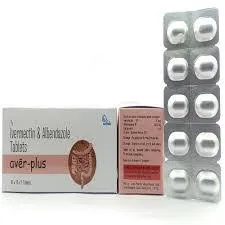- Afrikaans
- Albanian
- Amharic
- Arabic
- Armenian
- Azerbaijani
- Basque
- Belarusian
- Bengali
- Bosnian
- Bulgarian
- Catalan
- Cebuano
- Corsican
- Croatian
- Czech
- Danish
- Dutch
- English
- Esperanto
- Estonian
- Finnish
- French
- Frisian
- Galician
- Georgian
- German
- Greek
- Gujarati
- Haitian Creole
- hausa
- hawaiian
- Hebrew
- Hindi
- Miao
- Hungarian
- Icelandic
- igbo
- Indonesian
- irish
- Italian
- Japanese
- Javanese
- Kannada
- kazakh
- Khmer
- Rwandese
- Korean
- Kurdish
- Kyrgyz
- Lao
- Latin
- Latvian
- Lithuanian
- Luxembourgish
- Macedonian
- Malgashi
- Malay
- Malayalam
- Maltese
- Maori
- Marathi
- Mongolian
- Myanmar
- Nepali
- Norwegian
- Norwegian
- Occitan
- Pashto
- Persian
- Polish
- Portuguese
- Punjabi
- Romanian
- Russian
- Samoan
- Scottish Gaelic
- Serbian
- Sesotho
- Shona
- Sindhi
- Sinhala
- Slovak
- Slovenian
- Somali
- Spanish
- Sundanese
- Swahili
- Swedish
- Tagalog
- Tajik
- Tamil
- Tatar
- Telugu
- Thai
- Turkish
- Turkmen
- Ukrainian
- Urdu
- Uighur
- Uzbek
- Vietnamese
- Welsh
- Bantu
- Yiddish
- Yoruba
- Zulu
Dec . 12, 2024 11:29 Back to list
albendazol quinfamida suspension
Albendazole and Quinfamide Suspensions A Comprehensive Overview
In the realm of modern medicine, the development of effective treatments for parasitic infections is paramount, especially in regions where such diseases are endemic. Two notable medications that have emerged for the treatment of various parasitic infections are Albendazole and Quinfamide. Both of these drugs are utilized in suspension form, making them easier to administer, particularly in pediatric and geriatric populations.
Understanding Albendazole
Albendazole is a broad-spectrum anthelmintic (anti-worm) medication that works by inhibiting the metabolism of parasites, ultimately leading to their death. It is effective against a variety of parasitic worms, including roundworms, hookworms, tapeworms, and whipworms. Albendazole's mechanism of action involves blocking the polymerization of tubulin, which is crucial for the formation of microtubules in parasite cells. This disruption inhibits glucose uptake, resulting in the depletion of the parasite's energy stores.
Albendazole is widely recognized for its effectiveness against infections like neurocysticercosis and echinococcosis, which are caused by the larval stages of the pork tapeworm and the hydatid tapeworm, respectively. The suspension form of Albendazole makes it particularly useful in treating children or patients who may have difficulty swallowing pills.
Exploring Quinfamide
Quinfamide is another anthelmintic agent that has shown promise, particularly against intestinal parasites such as the amoeba Entamoeba histolytica and various helminths. It operates by inducing paralysis in the parasites, which facilitates their elimination from the host's body. Quinfamide has been particularly effective in cases of amoebic dysentery, a severe intestinal infection that can lead to significant morbidity if left untreated.
Quinfamide is also administered in suspension form, which enhances patient compliance. The medication is typically well-tolerated, with a side effect profile that is generally mild compared to other systemic treatments. This makes it a preferred choice in pediatric medicine, where safety and ease of administration are crucial considerations.
albendazol quinfamida suspension

Combining Albendazole and Quinfamide
Recent studies have explored the potential benefits of combining Albendazole and Quinfamide in treating multidrug-resistant strains of parasites or in cases where dual infections are suspected. This combined approach may provide a synergistic effect, enhancing the efficacy of treatment protocols.
The combination therapy can be particularly beneficial in areas with high endemic rates of parasitic infections, where single-agent treatments might not suffice due to resistance issues. Clinicians must, however, consider the individual patient's health status, possible drug interactions, and regional epidemiological data when prescribing these agents.
Safety and Efficacy
Both Albendazole and Quinfamide are considered safe for use in pediatric populations, with appropriate dosages based on weight and age. Adverse effects are typically limited to gastrointestinal disturbances, such as nausea or abdominal pain. Close monitoring is essential, especially in patients with liver conditions or when used in conjunction with other medications that may impact liver function.
Adherence to treatment regimens is crucial for the successful eradication of parasitic infections. Patients, caregivers, and healthcare providers must ensure that the full course of therapy is completed, even if symptoms improve early in the treatment.
Conclusion
In conclusion, Albendazole and Quinfamide suspensions represent significant advancements in the fight against parasitic infections. Their broad spectrum of activity, coupled with ease of administration, makes them valuable tools in both community health and clinical settings. As resistance patterns evolve, ongoing research into the efficacy and safety of these medications, as well as their potential for combination therapy, remains critical in optimizing treatment outcomes for affected populations. By understanding and utilizing these effective treatments, we can better address the public health challenges posed by parasitic diseases.
-
Guide to Oxytetracycline Injection
NewsMar.27,2025
-
Guide to Colistin Sulphate
NewsMar.27,2025
-
Gentamicin Sulfate: Uses, Price, And Key Information
NewsMar.27,2025
-
Enrofloxacin Injection: Uses, Price, And Supplier Information
NewsMar.27,2025
-
Dexamethasone Sodium Phosphate Injection: Uses, Price, And Key Information
NewsMar.27,2025
-
Albendazole Tablet: Uses, Dosage, Cost, And Key Information
NewsMar.27,2025













